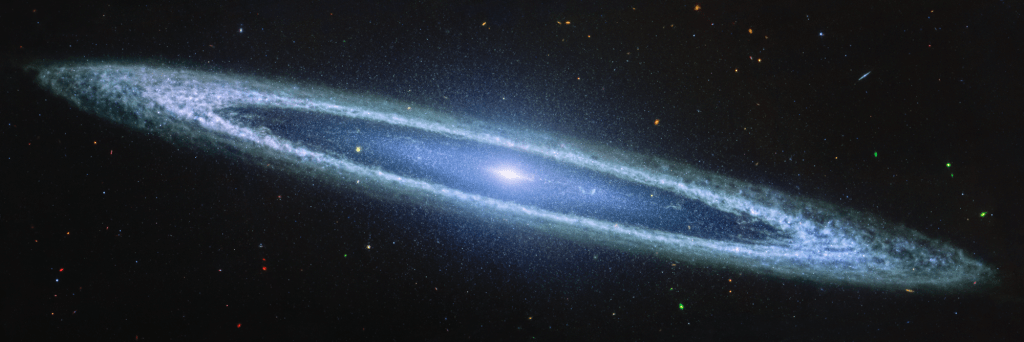Exploring the Universe: A Comparative Look at the Sombrero Galaxy Through the Eyes of Hubble and Webb
The Sombrero Galaxy, also known as Messier 104, is one of the most visually striking galaxies located in the constellation of Virgo. Its distinct appearance, reminiscent of a sombrero hat, has captivated astronomers and space enthusiasts alike. Recently, the Sombrero Galaxy has been observed through two of the most advanced space telescopes: the Hubble Space Telescope and the James Webb Space Telescope (Webb). Each telescope offers unique insights into the galaxy, unveiling its mysteries in different wavelengths of light.
The Legendary Hubble Space Telescope
Launched in 1990, the Hubble Space Telescope has been a cornerstone of astronomical research for over three decades. It orbits Earth and captures stunning images of the universe in visible, ultraviolet, and near-infrared light. Hubble’s view of the Sombrero Galaxy presents it as an oblong, pale white disk with a glowing core. The inner disk is bright, while the outer regions appear darker and clumpy. This view allows scientists to study the structure and composition of the galaxy in visible light, which is similar to what the human eye can see.
Hubble’s observations have been instrumental in advancing our understanding of the universe. It has helped reveal the lifecycle of stars, the existence of black holes, and the expansion rate of the universe. By capturing images of galaxies like the Sombrero, Hubble provides data that helps astronomers understand the formation and evolution of galaxies.
The New Era with James Webb Space Telescope
The James Webb Space Telescope, launched in December 2021, is the most powerful space telescope ever built. It is designed to observe the universe in infrared light, which allows it to see through dust clouds that obscure visible light. Webb’s view of the Sombrero Galaxy is notably different from Hubble’s, showcasing it as a very oblong, blue disk with a bright, compact core. The outer disk appears whiteish-blue and clumpy, resembling clouds in the sky. This infrared perspective reveals details about star formation and the presence of interstellar dust, which are not visible in Hubble’s images.
Webb’s mission extends beyond just imaging; it aims to study the atmospheres of exoplanets, explore the formation of stars and galaxies, and look back in time to the early universe. Its ability to capture infrared light allows Webb to peer into regions of space that were previously inaccessible, providing new insights into the cosmos.
Understanding the Observations
The differing views of the Sombrero Galaxy from Hubble and Webb highlight the complementary nature of these telescopes. Hubble’s visible light images reveal the galaxy’s structure and star population, while Webb’s infrared images provide information about the dust and gas that are crucial for star formation. By combining data from both telescopes, astronomers can gain a more comprehensive understanding of the galaxy’s composition and dynamics.
To put it simply, think of the universe as a vast library, and each telescope offers a different kind of book about the galaxy. Hubble reads the books available in the visible section, while Webb explores those in the infrared aisle. Together, they offer a fuller picture of the story of the Sombrero Galaxy.
The Science Behind Infrared Observations
Infrared light is a type of electromagnetic radiation with longer wavelengths than visible light. It is often used to observe celestial objects that are either too cool or too obscured by dust to be seen in visible light. This makes infrared telescopes like Webb invaluable for studying star-forming regions and the cores of galaxies.
When Webb observes the Sombrero Galaxy, it can detect the heat emitted by warm dust and newly formed stars that are invisible in visible light. This capability allows scientists to map out regions of active star formation and study the processes that drive the evolution of galaxies.
A Glimpse Into Galactic Evolution
The Sombrero Galaxy is an example of a spiral galaxy with a prominent bulge and a large population of older stars. By studying the light from these stars, astronomers can infer the galaxy’s age and evolutionary history. The presence of dust and gas, observed in infrared light, indicates ongoing star formation, even in a galaxy that appears to be mature.
The observations from Hubble and Webb together suggest that the Sombrero Galaxy is a dynamic and evolving system. Understanding the interplay between old and new stars, as well as the distribution of dust and gas, helps scientists piece together the lifecycle of galaxies.
Good to Know: The Role of Space Telescopes in Modern Astronomy
Space telescopes have revolutionized our understanding of the universe by providing clear, unobstructed views of celestial objects. Unlike ground-based telescopes, which are affected by Earth’s atmosphere, space telescopes can observe the universe without interference, leading to sharper and more detailed images.
The Hubble Space Telescope has been a workhorse of astronomy, capturing iconic images and enabling groundbreaking discoveries. It has inspired generations of scientists and the public alike. The James Webb Space Telescope, as its successor, promises to further expand our knowledge by exploring new frontiers in infrared astronomy.
Both telescopes are vital tools for astronomers, offering unique perspectives on the universe’s wonders. They complement each other, with Hubble’s strength in visible and ultraviolet observations and Webb’s prowess in the infrared spectrum.
Public Reaction and Scientific Enthusiasm
The unveiling of images from Hubble and Webb has sparked excitement within the scientific community and among the public. These images are not just beautiful; they represent the culmination of decades of technological advancement and scientific inquiry.
Astronomers are eager to analyze the data from these telescopes, as it holds the potential to answer fundamental questions about the universe. The public’s fascination with space and the cosmos is fueled by the stunning imagery and the promise of new discoveries.
In Conclusion
The observations of the Sombrero Galaxy by Hubble and Webb offer a fascinating glimpse into the complexities of galactic structure and evolution. By leveraging the unique capabilities of each telescope, astronomers can piece together a more complete picture of the universe.
These telescopes are not just windows to the cosmos; they are instruments of discovery that continue to push the boundaries of human knowledge. As we look to the stars, the combined efforts of Hubble and Webb remind us of the endless possibilities that lie beyond our world. For more details, you can always refer to the original insights on NASA’s official website.
For more Information, Refer to this article.

































